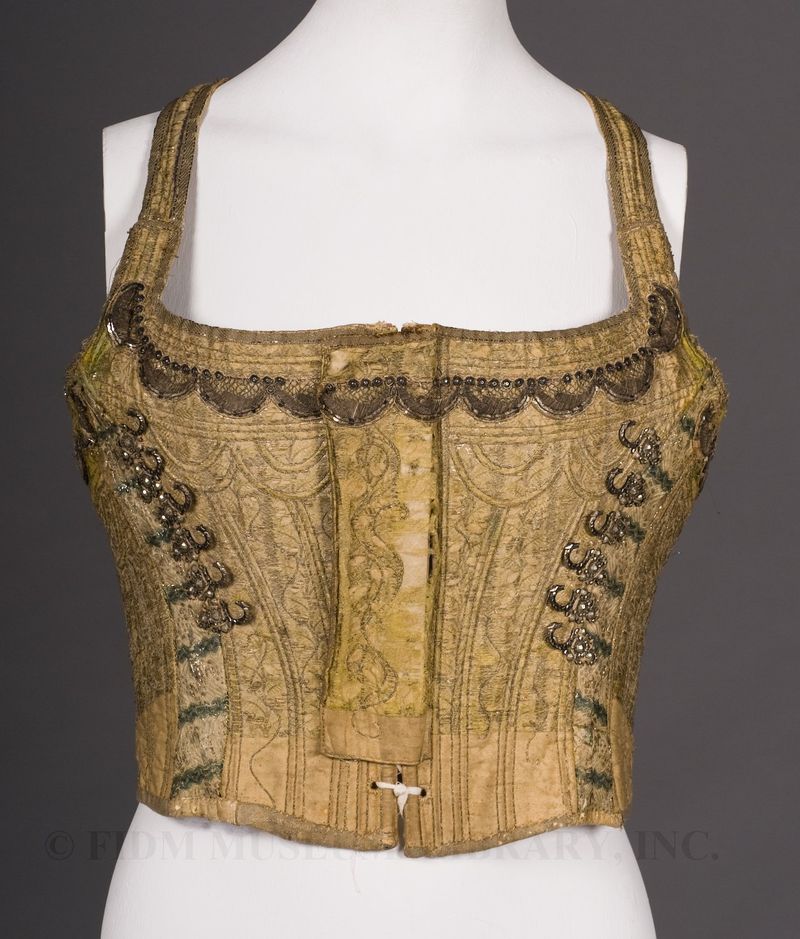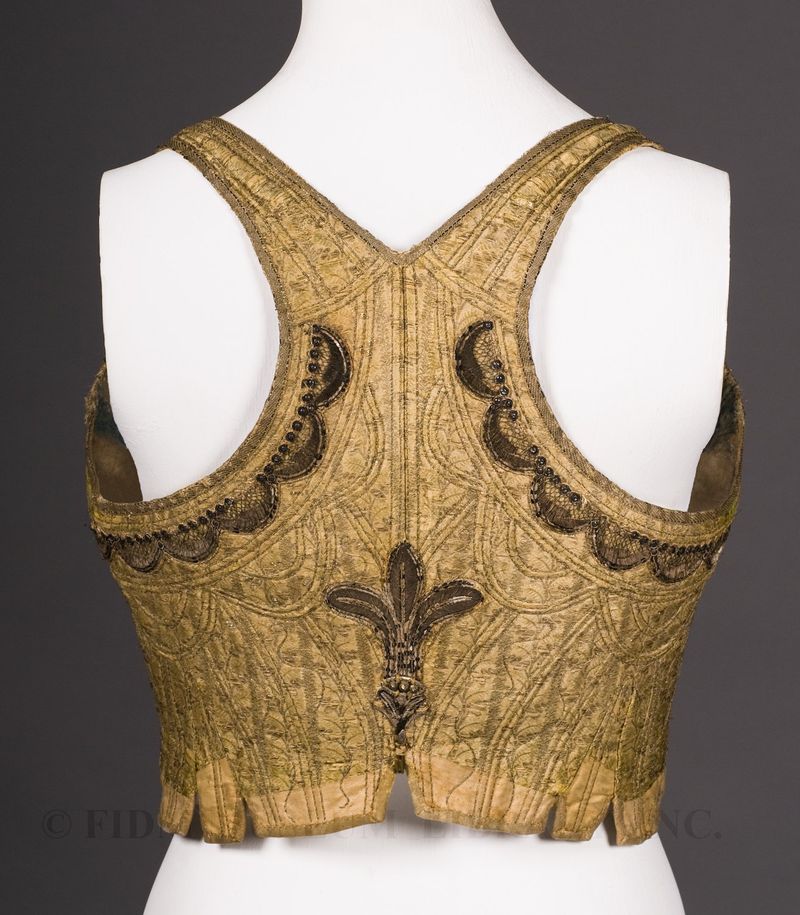Corselet, 1790-98
 Corselet
Corselet
1790-98
Gift of the Helen Larson Estate
S2001.31.17
This late eighteenth century corselet is a bit of a puzzle. Structurally, it's akin to a corset, complete with boning throughout. Despite its similarity to a corset, the surface embellishment, including small metal disks, metallic galoon lace and two vertical rows of ornate metal hooks, certainly doesn't lend itself to being worn as an undergarment. Given its dimensional surface embellishment, this corselet was definitely worn over another garment. But in what context? Was it fashionable dress, fancy dress or an example of regional dress? Given that underwear as outerwear wasn't a part of late eighteenth century or early nineteenth century fashionable dress, it is either an example of regional dress or part of a fancy dress costume.
A note accompanying this corselet indicates that it is probably an example of French regional dress. Books on European folk dress revealed that an embroidered or otherwise decorated sleeveless vest is a common element in women's folk dress throughout Europe. One source1, though lacking a documentary image, described a decorative corset/corselet worn over a sleeveless dress with elbow length sleeves and decorated cuffs. The neckline was described as high and straight across the front, with a raised point in back. Called a bavarel, this decorative corset was once worn in regions of Southern France. Sounds similar, but without an image it is impossible to document that our corselet is actually a bavarel.
Like many historic garments, this corselet shows evidence of alteration. Though a bit difficult to discern from this image, this corselet is constructed from light green silk brocaded with green silk and silver metallic thread in small leaf and flower motifs. The small motifs suggest a date of c. 1770s for the textile itself. Because of the extremely narrow back of the corselet, we surmise that the corselet was constructed c. 1790-1798.
Looking closely at the first image, notice that there's a horizontal line on each strap, just a few inches above the bustline. The straps were originally constructed to tie together. At a later date, the ties were eliminated by sewing the separate portions of each strap together. Portions of the lining, which date from 1820-1830, were also added after the initial construction of the corselet.
Despite initial research, our corselet is still mysterious. Additional research is definitely needed to more firmly pinpoint its origins. Have you seen something similar in your research or in your collections? If so, drop us a line. We'd love to get your input on this intriguing corselet.
1 Snowden, James. The Folk Dress of Europe. London: Mills & Boon. 1979: 43.
